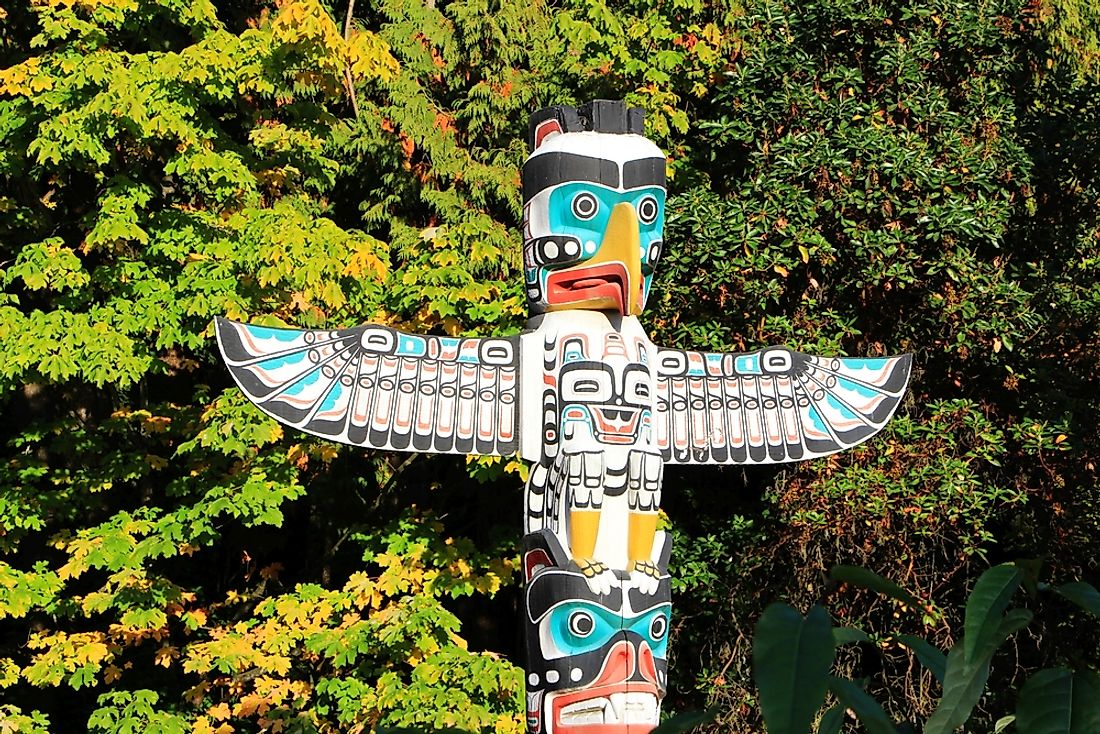Canadian Provinces and Territories by Indigenous Population

The aboriginal Canadians or indigenous Canadians are the indigenous people of Canada who still reside within present-day Canada. The aboriginal Canadians include the Métis, First Nations, and Inuit. In the past, they were popularly referred to as "Indian" and "Eskimos" but the terms have fallen into disuse because they are considered pejorative.
The early indigenous people were known to inhabit the Bluefish Caves and the Old Crow Flats. They were mostly hunters and gatherers and were engaged in the production of Projectile point tools, chisels, bangles, pottery. The type of tools made and the materials used are the key factors when distinguishing their culture, period, and location. Aboriginal Canadians were known to settle in permanent residences, practice agriculture, and engage in ceremonial architecture.
Canadian Provinces and Territories by Indigenous Population
Canada has a population of about 36.5 million, of which 1.5 million are considered aboriginal Canadians representing 4.3% of the population.
Ontario has a population of 301,425 indigenous Canadians representing 2.4% of Ontario’s population.
British Colombia has an indigenous population of 232,290 the second highest in the country, with aboriginals representing 5.4% of the province’s population.
Alberta ranks third with an indigenous population of 220,695 representing 6.2% of the province’s population.
Although Nunavut has an indigenous population of only 27,360, it represents 86.3% of the territory's total population.
Today, there are 11 oral and two aboriginal sign languages with 65 dialects. Nunavut considers Inuinnaqtun and Inuktitut as official languages while the North West Territories Act consider eleven aboriginal languages as official. These languages are not considered vehicular by the government and can be used to request for services alongside English and French.
History of Assimilation
In the late 19th and early 20th centuries, several programs to assimilate the aboriginals in what was referred to as the "Canadian culture" took place. The programs included legislations such as the Indian Act and the Gradual Civilization Act. Between 1857 and 1996 the Canadian government and the Catholic Church operated more than 100 residential boarding schools meant for aboriginal children across Canada. The children were forcibly taken from their homes into these schools in what the government considered as educating the masses although the schools were plagued by physical abuse, diseases, and lack of social amenities.
In 2006, the Truth and Reconciliation Commission ruled that the children were subjected to inhuman actions and awarded the Aboriginal Canadians $2 billion CAD. In 2008, the then Prime Minister Stephen Harper apologized to the indigenous people on behalf of the Canadian society.
Today, 56% of indigenous Canadians reside in urban areas. Access to improved living conditions including medical facilities has seen a rise in aboriginal population numbers. Friendship Centers emerged in the 1950's as hubs that offered culturally-appropriate programs to the indigenous people.
Canadian Provinces and Territories by Indigenous Population
| Rank | Provinces and Territories | Aboriginal Identity Population | Percentage of the Total Provincial or Territorial Population | Percentage of the Total Country Population |
|---|---|---|---|---|
| 1 | Ontario | 301,425 | 2.4 | 21.5 |
| 2 | British Columbia | 232,290 | 5.4 | 16.6 |
| 3 | Alberta | 220,695 | 6.2 | 15.8 |
| 4 | Manitoba | 195,900 | 16.7 | 14 |
| 5 | Saskatchewan | 157,740 | 15.6 | 11.3 |
| 6 | Quebec | 141,915 | 1.8 | 10.1 |
| 7 | Newfoundland and Labrador | 35,800 | 7.1 | 2.6 |
| 8 | Nova Scotia | 33,845 | 3.7 | 2.4 |
| 9 | Nunavut | 27,360 | 86.3 | 2 |
| 10 | New Brunswick | 22,615 | 3.1 | 1.6 |
| 11 | Northwest Territories | 21,160 | 51.9 | 1.5 |
| 12 | Yukon | 7,705 | 23.1 | 0.6 |
| 13 | Prince Edward Island | 2,230 | 1.6 | 0.2 |











